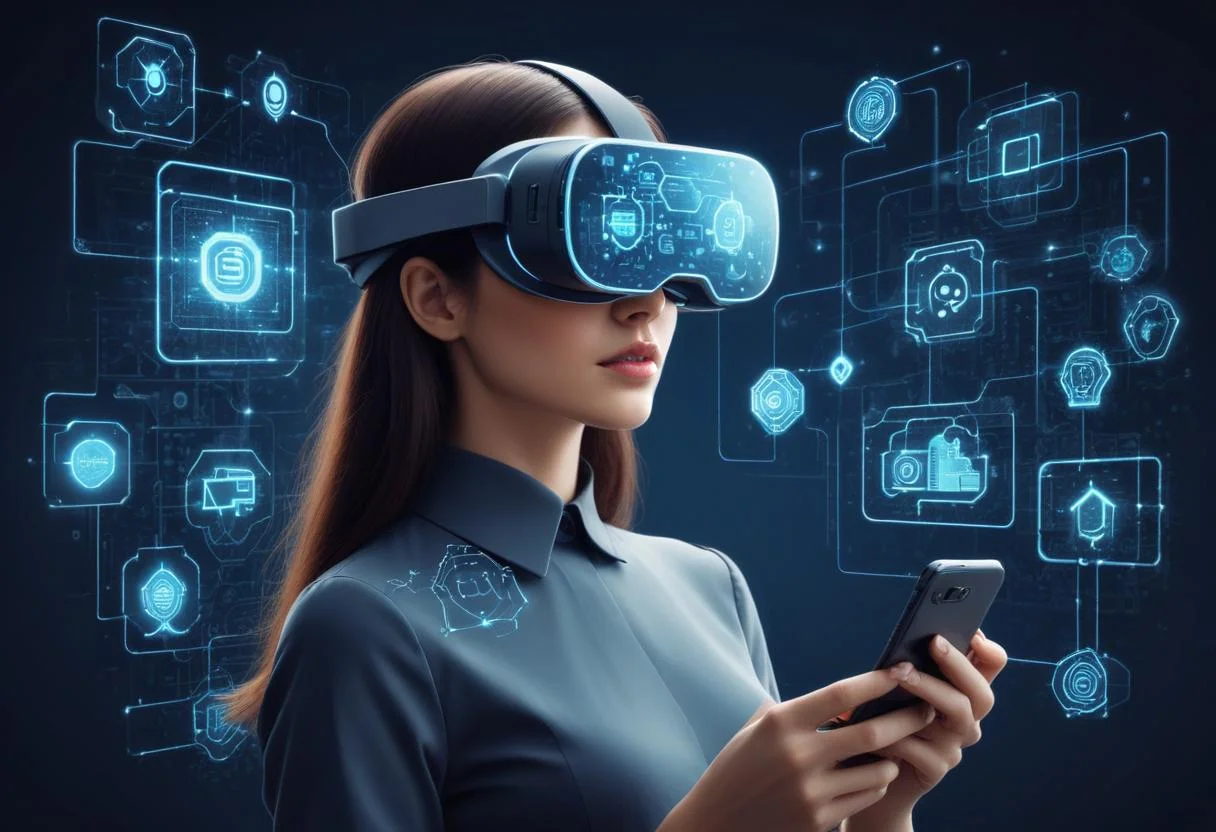Introduction
In an age where online shopping is ubiquitous, E-Commerce platforms must offer superior user experiences to differentiate themselves from competitors. The rapid advancement of technology presents unique opportunities for businesses to innovate their UX design. This blog explores how emerging technologies—such as AI, AR/VR, voice commerce, blockchain, and mobile-first design—are transforming the E-Commerce landscape. We also highlight how companies like UxifyAI are spearheading these innovations, providing comprehensive UX, UI, and AI solutions tailored for the E-Commerce sector.
1. The Rise of AI and Machine Learning in UX Design
Artificial intelligence and machine learning are game-changers in the realm of E-Commerce. These technologies enable platforms to provide highly personalized and efficient shopping experiences.
- Personalized Shopping Experiences: AI algorithms can analyze vast amounts of user data to predict preferences and recommend products. This personalization increases the likelihood of purchase and enhances customer satisfaction. For instance, UxifyAI utilizes advanced AI systems to create personalized user journeys, ensuring each customer feels uniquely catered to.
- AI-Driven Analytics: By leveraging machine learning, businesses can gain deeper insights into user behavior. This data-driven approach allows for the continuous optimization of website elements, from layout to content. Companies can identify patterns and trends, making informed decisions to improve the overall user experience.
- Predictive Design and Automation: AI’s predictive capabilities can anticipate customer needs, automating various aspects of the shopping process. Automated customer support, through AI-powered chatbots, ensures that users receive instant assistance, enhancing their shopping experience.
2. Augmented Reality (AR) and Virtual Reality (VR) in E-Commerce
AR and VR technologies are revolutionizing the way consumers interact with online stores, offering immersive and interactive experiences.
- Virtual Try-Ons: AR allows customers to virtually try on products such as clothing, accessories, and cosmetics. This technology reduces the uncertainty of online shopping, as customers can see how products will look before making a purchase.
- 3D Product Views: VR provides users with a 360-degree view of products, offering a more detailed and realistic presentation. This immersive experience can simulate in-store shopping, making online purchases more appealing.
- Enhanced User Engagement: These technologies not only enhance user engagement but also build brand loyalty. By offering innovative shopping experiences, brands can differentiate themselves in a crowded market.
3. Voice Commerce and Conversational Interfaces
The convenience of voice-activated devices has led to a surge in voice commerce. Designing for voice interfaces is becoming increasingly crucial for E-Commerce platforms.
- Voice User Interfaces (VUI): Voice assistants like Amazon’s Alexa and Google Assistant are becoming common tools for shopping. Designing intuitive VUIs that understand natural language is essential for providing a seamless voice shopping experience.
- Conversational Shopping: Voice assistants can guide users through product searches, answer questions, and even complete transactions. This conversational approach simplifies the shopping process, making it more accessible and efficient.
- Challenges and Best Practices: While voice commerce offers convenience, it also presents challenges such as accurately interpreting user commands and ensuring data security. Best practices involve continuous testing and optimization to refine the VUI experience.
4. Blockchain and Security in E-Commerce UX
Blockchain technology offers enhanced security and transparency, addressing some of the biggest concerns in online shopping.
- Enhanced User Trust: Blockchain’s decentralized nature ensures that transactions are secure and transparent. This technology can help prevent fraud, build trust, and attract more customers to E-Commerce platforms.
- Secure Payment Systems: Blockchain enables secure and efficient payment processing, reducing the risk of cyberattacks. Customers can make transactions with confidence, knowing their financial information is protected.
- Transparency in Supply Chains: Blockchain can track the entire journey of a product, from production to delivery. This transparency is particularly appealing to consumers interested in ethical sourcing and sustainability.
5. Mobile-First Design and Progressive Web Apps (PWAs)
With the majority of online shopping occurring on mobile devices, adopting a mobile-first approach is critical.
- Responsive Design: Ensuring that websites are optimized for mobile devices is no longer optional; it’s a necessity. Mobile-first design prioritizes speed, simplicity, and ease of navigation, which are key to retaining mobile users.
- Progressive Web Apps: PWAs combine the best features of web and mobile apps, offering fast loading times, offline capabilities, and an app-like experience. They are a cost-effective solution for providing a high-quality mobile experience.
- User Experience Optimization: Focusing on mobile-first design ensures that all elements of the website, from layout to content, are optimized for mobile users, enhancing overall user satisfaction.
6. Sustainability and Ethical Design
Today’s consumers are increasingly concerned with sustainability and ethical practices. E-Commerce platforms can respond by incorporating these values into their UX design.
- Green UX: Implementing eco-friendly practices in design and operations, such as optimizing for energy efficiency and minimizing digital waste, is becoming more important.
- Ethical Considerations: Designing with inclusivity and fairness in mind ensures that all users, regardless of their abilities, can access and enjoy the shopping experience. This includes considerations for accessibility and data privacy.
- Building User Loyalty: Brands that prioritize ethical and sustainable practices often enjoy greater customer loyalty. Consumers are more likely to support companies that align with their values.
Conclusion
As technology continues to evolve, so does the field of E-Commerce UX design. By leveraging emerging technologies such as AI, AR/VR, voice commerce, blockchain, and mobile-first design, businesses can create innovative and engaging shopping experiences. Companies like UxifyAI are at the forefront of this transformation, offering cutting-edge solutions to help E-Commerce platforms thrive in an increasingly competitive market. Embracing these trends is not just about staying relevant—it’s about providing the best possible experience for users, today and in the future.



